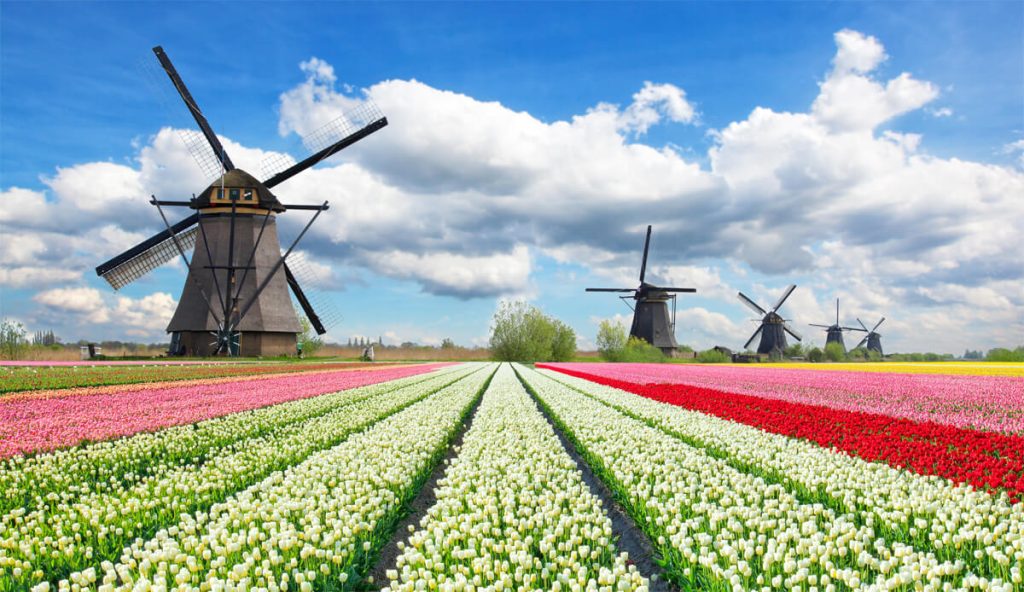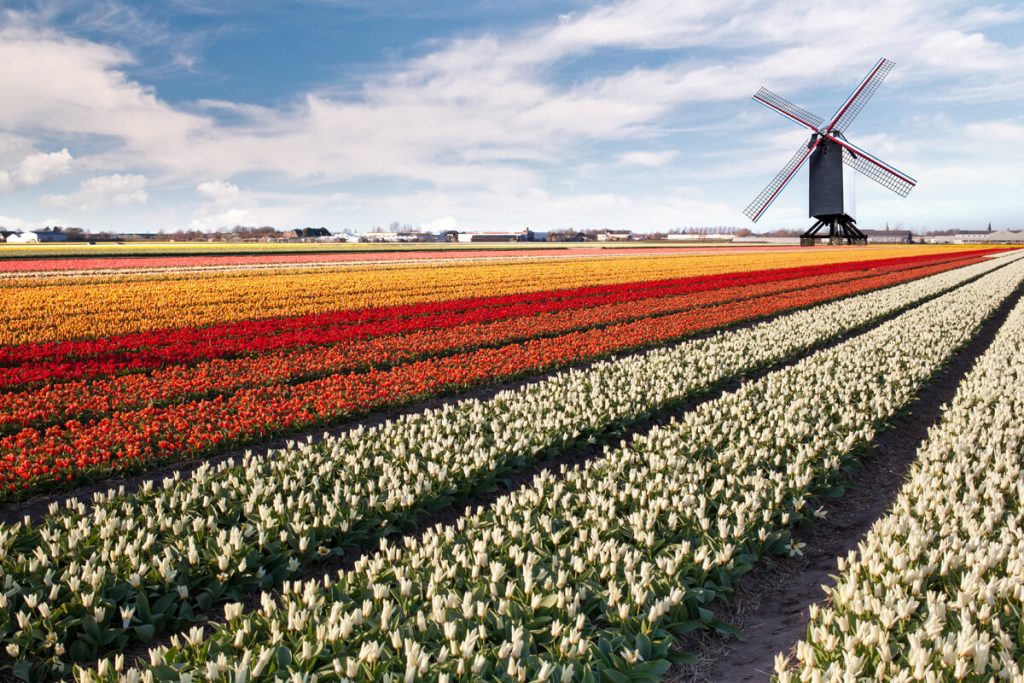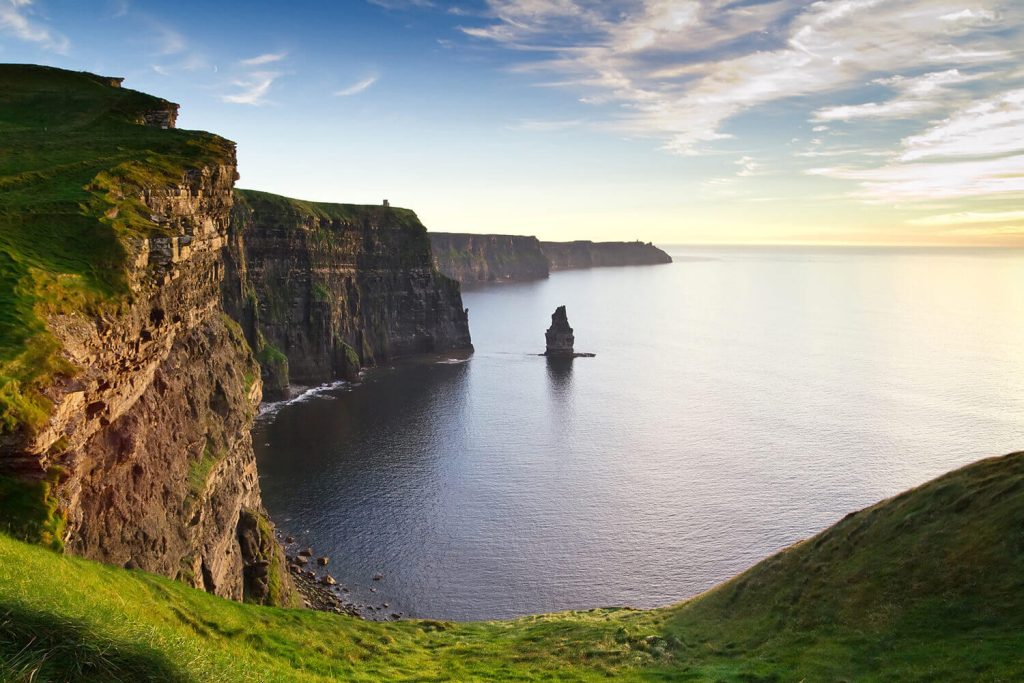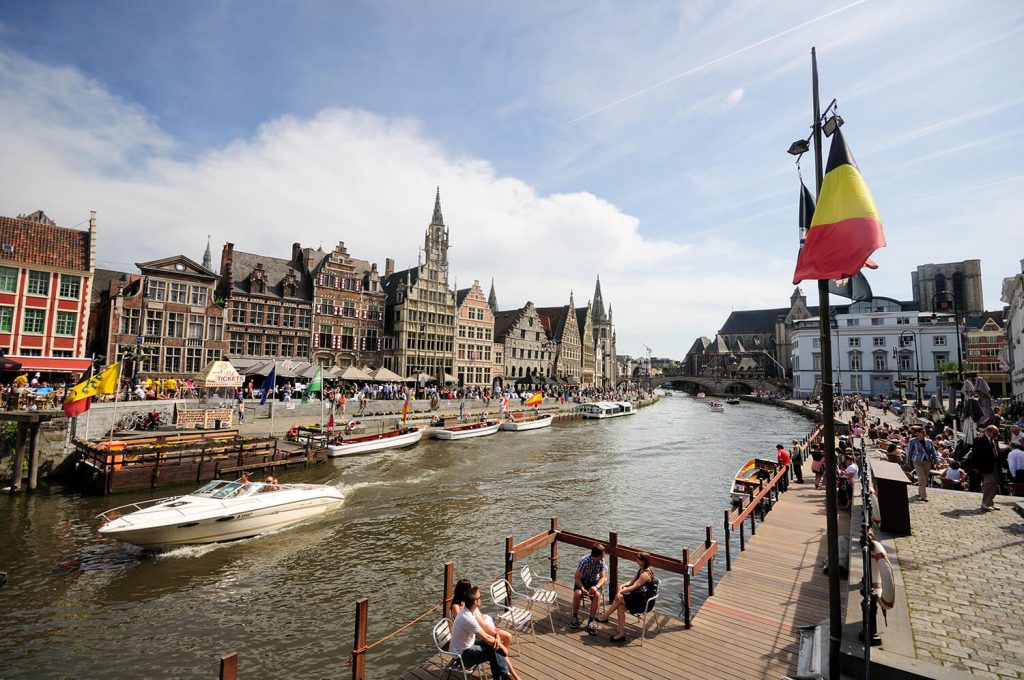General information about The Netherlands
The Netherlands, literally ‘The Low Countries’, is found on the north-western coast of Europe. Famous worldwide for its dykes, windmills, and tulips, the Netherlands has taken on enormous significance in recent years as the seat of many European Union institutions, as well as the home of the International Court of Justice. This internationalism is key to its reputation, with an economy far beyond its population of only 17 million, and a level of English among the highest in the world. Despite all this modernity, the history of the Netherlands is clear in its constitutional monarchy and the colonial facades of Amsterdam and its other beautiful cities – and that’s before we mention the country’s overseas territories in the Caribbean. Dutch air and sea ports are some of the busiest on its continent, and with a love of alcohol that goes back centuries, there are surely opportunities to be found here for entrepreneurs in the world of wine.
Wine production in The Netherlands
The Netherlands may not be the first name on the lips of European winemakers, but a small and growing industry is present within the country. Wine of this kind must by law be labelled ‘wijn van proefaanplant’ and ‘Nederland’. Although modern production of wine began only fifty years ago, there is evidence of winemaking as early as one thousand years ago. With climate change and the warming of Europe, wine may feature much more significantly in Dutch culture in the decades to come, but for the moment there are only some two hundred commercial wineries. Other alcohol produced within the country includes, of course, beer, and high-percentage spirits such as Jenever, made from juniper and distilled to 50%.
Legislative regulation of wine imports into The Netherlands
Wine importers in the Netherlands are governed by the laws and regulations of both the Kingdom of the Netherlands and, where applicable, those of the European Union. Stock must be reported annually to the RVO, or Dutch Enterprise Agency. Thorough records must be maintained, inbound bottles in a bottle administration, as outlined at the link below. The usual EU rules as to PDO and other geographical denominations must also be followed. For full information, please see the following: https://business.gov.nl/regulation/wine/
Importing wine to The Netherlands
The volume of wine imports into the country was $1.6 billion in 2021, making the Netherlands the 7th largest importer of wine in the world. Wine exports from the country amounted to a surprisingly large $469 million, or the 14th largest wine producer in the world by value.1 The volume of wine imports into the country was $1.6 billion in 2021, making the Netherlands the 7th largest importer of wine in the world. Wine exports from the country amounted to a surprisingly large $469 million, or the 14th largest wine producer in the world by value.

Top Five Wine Importers to The Netherlands:
France: $510 million
Italy: $270 million
Germany: $210 million
Spain: $159 million
Chile: $93 million
The following countries showed the greatest growth in imports for the period 2020 to 2021: Belgium ($29M) and France ($93.6M).
The Dutch wine market is very competitive and saturated. In 2022, a total of 349 million litres of wine were sold in the country, amounting to 20 million fewer litres than the previous year. By value, however, sales have shown steady growth over the past few years. Sales reached 2.7 billion Euros in 2022; in 2020 they were only 2.1 billion euros, and in 2021 2.3 billion euros.2
Wine distribution in The Netherlands
Wine is currently the most popular alcoholic beverage in The Netherlands; its lead over beer is expected to grow even further. On-trade wine sales in The Netherlands accounted for some € 2.7 billion.
All grocery shops are permitted to sell alcohol under 15%, a figure which includes most wines, without a license, though they are not permitted to offer tastings and must take the appropriate steps towards age verification. Alcohol cannot be sold in what the Dutch government terms a non-food retail shop, such as a clothes shop. Similarly, wholesalers are not required to own an alcohol license for wine; though please note that catering establishments must apply for a license.
Wine sales in the on-trade and retail segments in 2022 occupied 20% of the alcoholic beverages market by volume and 21% by value. Sales of white wines in the same segment amounted to 43%, with red wines at 36%, and rosé wines 14%.3
88% of wines on the Dutch market are sold in retail/off-trade premises, with the rest on-trade. Of this, 88% comes from supermarkets, 19% from discounters, 13% from specialty liquor stores and 10% from online sales.4
Wine Preferences among Dutch Consumers
Rosé wine accounts for around 7% of sales, and, with only around 2% of the market, sales of sparkling and fortified wine remain small in comparison to still.
The average price of a bottle sold is approximately €3.00 ($3.21). It is worth considering, however, that these statistics include the most inexpensive wines, including fruit flavoured wines.
The most popular varieties of wine imported to the Netherlands are Merlot, Chardonnay, Pinot Grigio and Grüner Veltliner. A noticeable direction of modern consumer interest is towards organic and sustainable wines. The Netherlands also has a high share of sparkling wine sales relative to other European countries, as well as a notable share of white wines.
Among The Netherlands’ Major Wine Importers
Résidence Wijnen are a small wine importer, aiming at quality over quantity. They import from all over the world.
For almost a century, Léon Colaris has overseen wine importation of the finest quality. Expect a personal, expert service from this renowned ‘broker in pleasure’.
De Monnik Dranken is among the country’s largest importers, with more than a hundred employees and a hundred-year history to match. Almost 10,000 varieties of wine, whisky, and other alcohol can be found with this heavyweight of Dutch wine.
Sources:
- https://oec.world/en/profile/bilateral-product/wine/reporter/nld ↩︎
- https://assets.ctfassets.net/pn8wbiqtnzw9/sYZ1jBln6x37qRvLvpxye/c943367140a153b7ab38e814fd495d50/The_Netherlands-_Wine_Market.pdf ↩︎
- https://assets.ctfassets.net/pn8wbiqtnzw9/sYZ1jBln6x37qRvLvpxye/c943367140a153b7ab38e814fd495d50/The_Netherlands-_Wine_Market.pdf ↩︎
- https://my.nzte.govt.nz/article/20240103-the-netherlands-wine-market ↩︎



